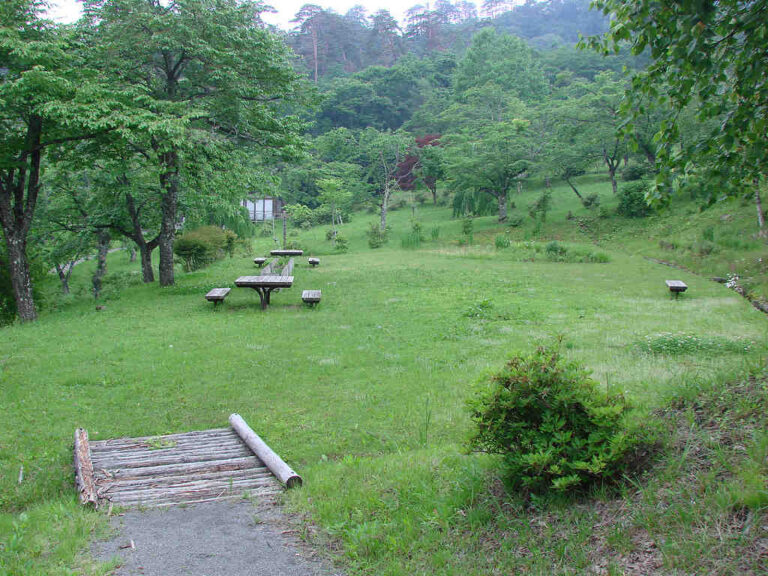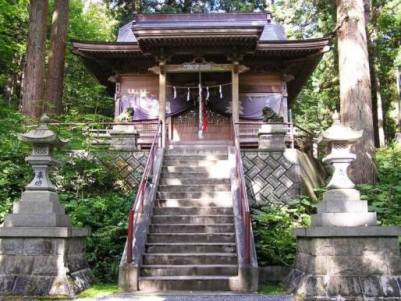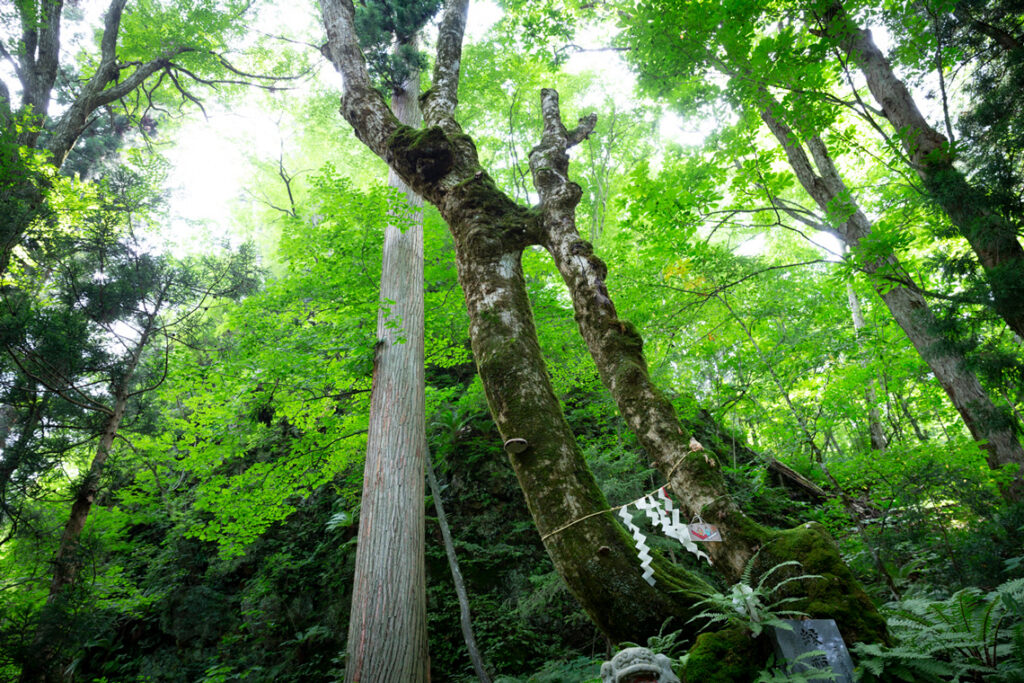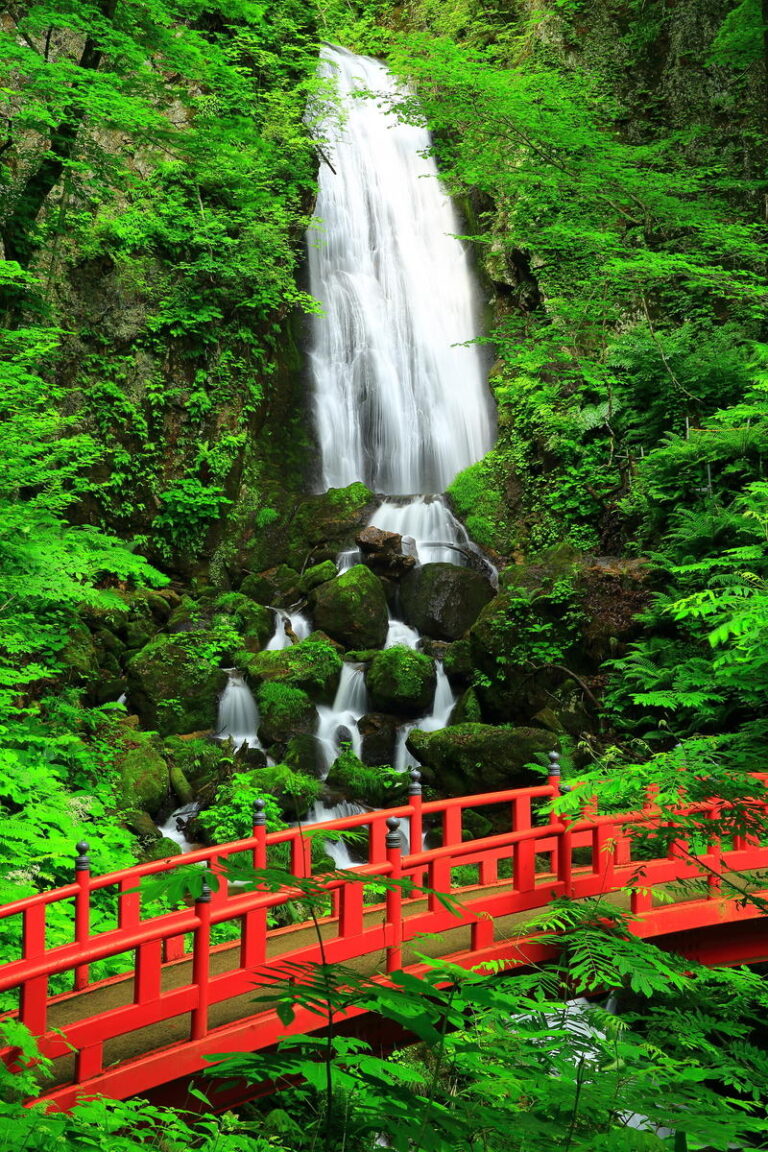Sakuramatsu Park
Tranquil Sakuramatsu Park in the Ashiro district of Hachimantai is the kind of place that people who grew up in this area claim as their heart’s home. From the parking area a short looping trail fragrant with two-century-old cedars and pines leads along a mountain stream to the Sakuramatsu Shrine, a tiny sanctuary that dates back to at least 1744. The name, which literally means “Cherry Pine,” derives from a legend that cherry blossoms once sprouted from the limbs of a pine tree here. The shrine is believed to be a place where auspicious things happen.
Sakuramatsu Shrine And The Good Luck Tree
Just past the entrance gate stand two moss-covered maple trees, gnarled with age but no less celebrated. Appearing to meld seamlessly with the outcropping of rock from which they grow, the two trunks are joined not only at their base but also higher up, midair along their curving length. Because they have fused together in this way over the years, the trees are considered a source of good luck for couples.
A few steps beyond is the shrine. After paying respect with a bow, summon the gods with a pull on the corded ropes tied with bells. Bow twice, clap your hands twice, and then bow again after you have said your prayer. The kami of Sakuramatsu Shrine is Seoritsuhime, the goddess of river rapids, venerated for cleansing the world of impurity. It is said that Sakuramatsu Shrine is the northernmost shrine in Japan where Seoritsuhime is worshipped.



Fudo-no-Taki waterfall

Farther along the path is the Fudo no Taki waterfall, a cascade that once served as training ground for practitioners of Shugendo, a tradition of mountain asceticism incorporating Shinto and Buddhist beliefs. Fudo refers to the central deity of the five Wisdom Kings, whose fierceness converts anger into salvation. The three-tiered waterfall drops from a height of 15 meters and is listed among Japan’s top 100 scenic cascades. From here the trail descends with the falls and turns to follow the mountain stream through a leafy glen that is filled with ferns and moss-covered stones. Along the way back to the starting point are benches in shady spots that invite a break or even a picnic. The annual shrine festival is held each May 3, when snowmelt turns the cascade into a powerful rushing torrent.
Historical lore relates that the elderly couple who discovered cherry blossoms growing from a pine tree here saw the beautiful figure of Seoritsuhime in the stream as they walked along. When they happened on the waterfall, the wife felt Seoritsuhime’s presence in the cascade; the husband felt that of Fudo. Such tales associating Shinto kami with gods of the Buddhist pantheon are not uncommon, and point to the fluidity of these traditions, especially as people of long ago interpreted them in nature.
Sakuramatsu Park is less than seven kilometers from the Ashiro Exit on the Tohoku Expressway.
Sakuramatsu Park
(Sakuramatsu Shrine / Fudo no Taki Waterfall)
Takahata, Hachimantai-shi, Iwate 028-7542
Find out more about Sakuramatsu Shrine at hachimantai.or.jp
See visitiwate.com for information on things to do throughout Iwate Prefecture.

